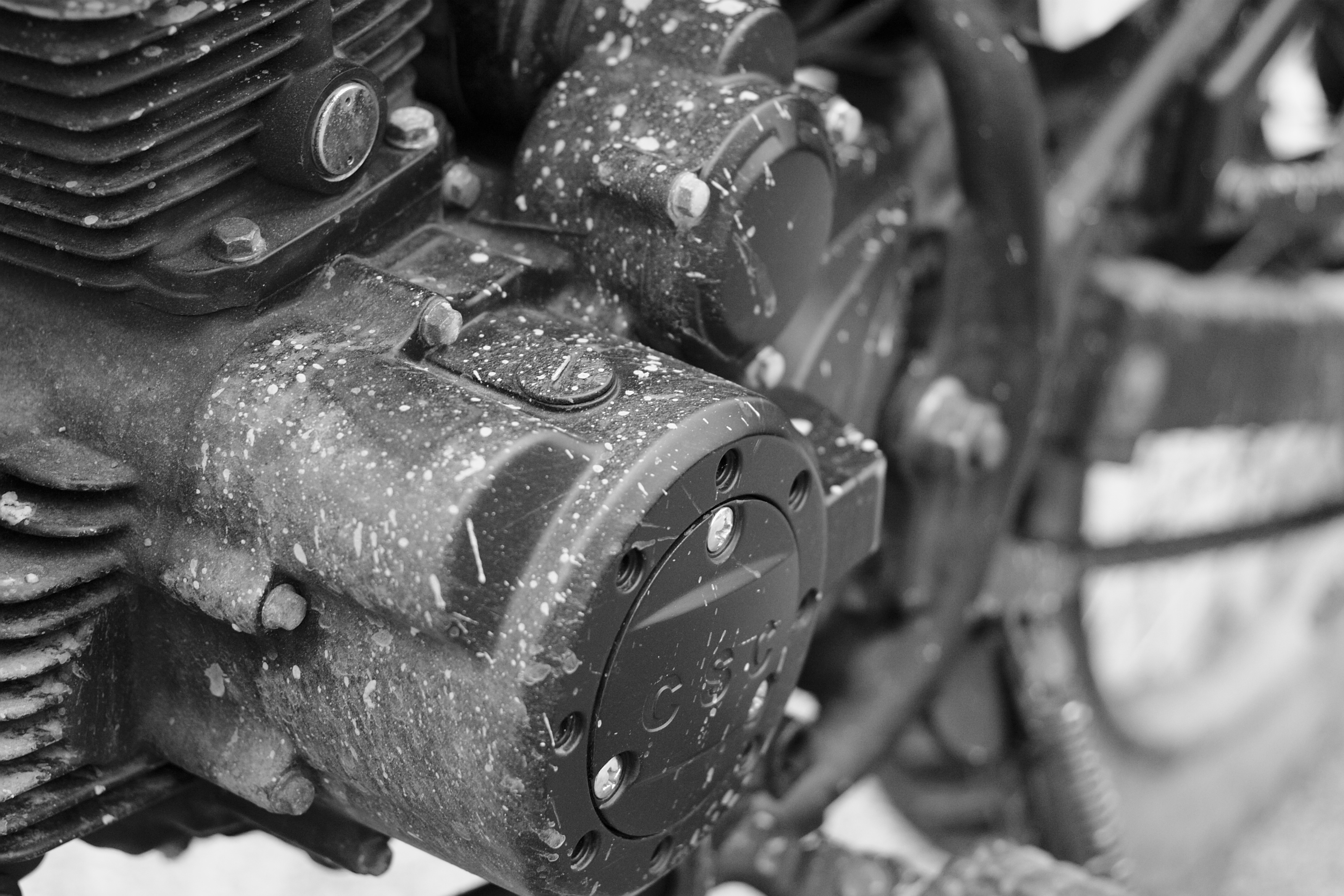You Always Want What You Don’t Have
I spend all of my riding time on small bore bikes, by US standards. My Ninja 300 at 296cc and the CSC TT250 weighing in at 229cc.
The Ninja will – realistically – pull to about 75mph easily, above which there’s a tardy roll-on to about a top speed of 105, with my 210lbs astride it, at least. The TT250 will achieve 55-60 with nearly linear acceleration. The gearing limits it, with the engine turning almost 7000 rpm. It is possible to gear down via losing a couple of teeth on the rear sprocket, but I do not want to lose any more pull as it is about perfect for the hilly terrain here.
Both are easily quick enough for the street and back roads, but the TT250 isn’t really suited for superslab, at least not allowing for a safety margin.
If you take a 300 on a group ride and you have a lot of seat time on it, you’ll have no problem keeping up, assuming you’re not blasting down an expressway. On a technical road it’s a giant killer. It’s light, stops fairly well thanks to docile brakes and strong engine-braking, and turns in sharply. At around 18ft.lbs peak torque, you can pull silly amounts of throttle and it won’t get out of shape. In short, it’s easy to ride quickly. Get used to people telling you they’re surprised how fast it runs in a pack. It’s a truism that few riders (here, at least) have experienced the limits of their bikes, so they’re surprised how quick a ‘learner bike’ can run in familiar hands. They’ve just not spent enough time on one.

The TT250 is an absolute blast on tight, nasty roads with a poor surface, thanks to generous suspension travel. A very driveable engine with modest torque, it delivers power a lot more evenly than the piquey 300, but obviously there’s less of it. The bike’s turn-in is very rapid (it’s light at 320 lbs.) and it feels glued to the road thanks to relatively soft tyres. You can easily imagine why Dual Sports are such popular street bikes, not to mention their street-tyred derivative, the SuperMoto.
The downsides? Going uphill. Street bikes in the >500cc class will climb a hill while maintaining good acceleration. My 300 is okay as long as you keep the revs high. The TT250 really doesn’t like it; again my weight doesn’t help and maintaining some kind of fitness would help matters a lot. Aerodynamic drag, which squares with speed, is another. I’m 6’3″, and make a nice sail while sitting on the bike. Tucking low on the Ninja, stomach on the tank, makes a huge difference and I can’t reach the bike’s top speed without it. Running tight roads uphill is often easier in the TT250 due to the engine’s much wider torque characteristics, and short gearing. On a group ride, riders on torquey bikes will typically eat your lunch when accelerating out of tight uphill corners.
My recreational riding on Western PA’s fantastic roads is at a speed regime that is squarely within the 300’s performance envelope. Interestingly, this also goes for everyone I ride with, and that includes someone with a Superduke 1290. I too want a bigger bike sometime soon, and I’ve spent this year riding a few. So why, if all of my needs are met?
Well, they’re not. More power is more fun, and it’s also another thing to master. It’s why we ride, right? There’s more. With larger bikes come bigger tyres, typically better suspension, and stronger brakes. These usually bring a step in performance too. There is a specific scenario any small-bore rider is familiar with – and that’s overtaking. This is a most fraught area when you’re new to riding, as you don’t have enough power exactly where you need it, that is around 50-60mph with a small time window to get around a car. Overtaking is a reality when you’re on an aggressive ride; it’s a necessity. You have to learn to do it and you must know exactly what your bike will do. When in a group you need to exercise highly-disciplined judgement as everyone else will typically have a lot more power available, and they will use it to pass where you cannot.
There is also the matter of work. There’s a fine line between rider engagement and simply being busy, and on a long country ride at spirited speeds, you can be regularly at full throttle while constantly, constanty rowing through the gears. It adds up over a day. Being able to use a fraction of a bike’s performance to run at a pace your comfortable with makes a difference to your fatigue level. The 1000cc class bikes I’ve ridden have been an interesting change in workload. They are by no means ‘easier’ to ride, but they can be less work due to simply having far more performance available in a given situation.
A friend of mine finally sold her pre-gen Ninja 250 last year, and bought a rather handsome Yamaha FZ6R. She’s an excellent rider, and one of the things she was emphatic about was how relaxed it was on the highway, in terms of comfort and smoothness, so she arrived at the twisties with no stress. These things start to matter to you, after a while.


Leave a Reply